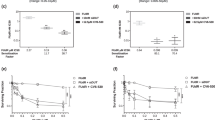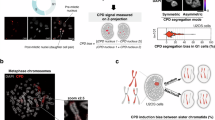Abstract
TRITIUM-LABELLED thymidine (3Hth), a DNA precursor, has been widely used for examining cells which have recently received stimulation for reduplication. The 3Hth, which can be localized at the cellular level by means of autoradiography, is reputedly incorporated almost exclusively by cells which are undergoing chromosome duplication in preparation for cell division1.
This is a preview of subscription content, access via your institution
Access options
Subscribe to this journal
Receive 51 print issues and online access
$199.00 per year
only $3.90 per issue
Buy this article
- Purchase on SpringerLink
- Instant access to full article PDF
Prices may be subject to local taxes which are calculated during checkout
Similar content being viewed by others
References
Hughes, W. L., Bond, V. P., Brecher, G., Cronkite, E. P., Painter, R. B., Quastler, H., and Sherman, F. G., Proc. U.S. Nat. Acad. Sci., 44, 476 (1958).
Harding, C. V., and Srinivasan, B. D., Exp. Cell Res., 25, 326 (1961).
Kinsey, V. E., Grant, M., and Cogan, D. G., Amer. Med. Assoc. Arch. Ophthal., 27, 242 (1942).
Author information
Authors and Affiliations
Rights and permissions
About this article
Cite this article
MAENZA, R., HARDING, C. Disappearance of Tritiated Thymidine and Tritiated Water from the Anterior Chamber of the Rabbit Eye. Nature 196, 786–787 (1962). https://doi.org/10.1038/196786a0
Issue date:
DOI: https://doi.org/10.1038/196786a0



